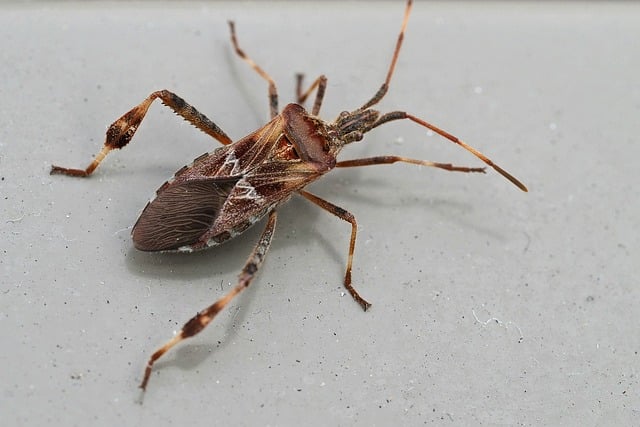Implementing effective rodent control for homes involves a multi-step process starting with identifying and sealing entry points like cracks and gaps. Regular inspections, maintenance, and clean indoor environments deter rodents. Tailored solutions, addressing unique home vulnerabilities through professional techniques and tools, offer long-term protection. Prompt issue resolution and regular upkeep are crucial for sustained rodent control, ensuring home safety, cleanliness, and comfort.
Implementing effective rodent control for homes involves strategic planning and tailored solutions. This comprehensive guide breaks down the essentials of rodent prevention, offering insights into understanding rodent behavior and assessing your home’s vulnerabilities. By identifying potential entry points and high-risk areas, you can develop a customized pest prevention plan that provides long-term protection. Discover how to create an impenetrable barrier against rodents, ensuring a safe and secure living environment.
Understanding Rodent Control: The Basics of Rodent Prevention for Homes
Rodent control is an essential aspect of maintaining a healthy and safe living environment, particularly in residential areas. When it comes to protecting your home from rodents, understanding the basics of prevention is key. The first step involves identifying potential entry points, such as cracks, gaps around pipes or wires, and poorly sealed doors or windows. Sealing these openings with appropriate materials like steel wool, caulk, or metal screens can significantly deter rodents from gaining access.
Regular inspection and maintenance are vital components of effective rodent control for homes. This includes keeping the exterior of your property neat and tidy, removing potential food sources like garbage or pet food, and ensuring proper waste management practices. Additionally, maintaining a clean indoor environment by regularly cleaning up crumbs, spills, and food residues reduces attractants, making it less inviting for rodents to enter.
Assessing Your Home: Identifying Potential Entry Points and High-Risk Areas
When it comes to creating a customized pest prevention plan, assessing your home is the first step towards long-term protection. Start by conducting a thorough inspection inside and outside your property. Look for any signs of damage or entry points that pests might exploit. Common areas to check include walls, attics, windows, doors, and pipes. Rodents, in particular, are adept at finding hidden passages, so pay close attention to spaces behind appliances, under floors, and around utility lines.
Identify high-risk areas based on the type of pest you’re trying to prevent. Kitchens and bathrooms, for instance, are prime real estate for rodents due to the presence of food and water sources. Basements and crawl spaces also warrant extra attention because they offer ideal habitats for various pests. Once these potential entry points are mapped out, address any vulnerabilities by sealing gaps, repairing damages, and installing appropriate barriers to implement effective rodent control for homes.
Tailored Solutions: Developing a Customized Pest Prevention Plan
In today’s digital era, homeowners are increasingly seeking tailored solutions for their pest control needs, especially when it comes to rodent control for homes. A customized pest prevention plan is a game-changer that offers long-term protection by addressing specific challenges and vulnerabilities unique to each residence. This approach moves beyond one-size-fits-all strategies, acknowledging that every home has its own complex ecosystem of potential pests.
By developing a customized plan, professionals can identify and mitigate entry points, harbors, and food sources that attract rodents. They employ specialized techniques and tools tailored to the home’s structure, location, and history, ensuring comprehensive protection. This personalized approach not only enhances the effectiveness of pest control but also promotes environmentally friendly practices, as it minimizes the use of harsh chemicals in areas that may not require them.
Long-Term Protection: Implementing and Maintaining an Effective Rodent Control Strategy
Rodent control is a critical component of any comprehensive long-term protection plan, especially for homeowners looking to safeguard their properties. Implementing an effective rodent control strategy involves understanding the behaviors and habitats of common rodents like mice and rats, as well as employing tailored methods to address specific needs. This includes identifying potential entry points into homes, such as cracks or gaps in walls and floors, and sealing them off using appropriate materials. Additionally, setting up traps or using bait stations strategically placed around problem areas can be highly effective in deterring and controlling rodent populations.
Regular maintenance is key to sustaining the success of these measures. Homeowners should schedule routine inspections throughout the year to assess any new potential entry points or signs of rodent activity. During these checks, addressing any issues promptly—whether it’s repairing damaged screens, sealing gaps, or re-setting traps—ensures that the rodent control plan remains robust and effective over time. By combining proactive measures with consistent maintenance, homeowners can achieve long-term protection from rodents, ensuring their homes remain safe, clean, and comfortable.
When it comes to safeguarding your home from rodents, a proactive approach is key. By understanding the basics of rodent prevention, assessing potential entry points, and developing a tailored pest prevention plan, you can achieve long-term protection against these relentless intruders. Implementing an effective rodent control strategy involves a combination of physical barriers, sanitary practices, and, if necessary, professional intervention. With consistent maintenance and regular reviews, your home can remain a fortress, free from the nuisance and potential damage caused by rodents. Embrace these measures to ensure a peaceful and pest-free living environment.
